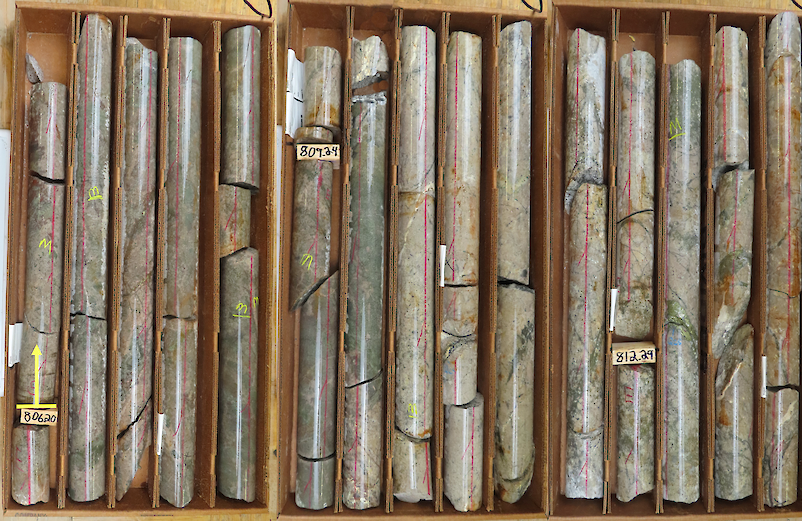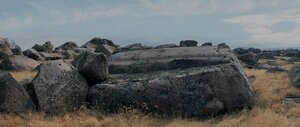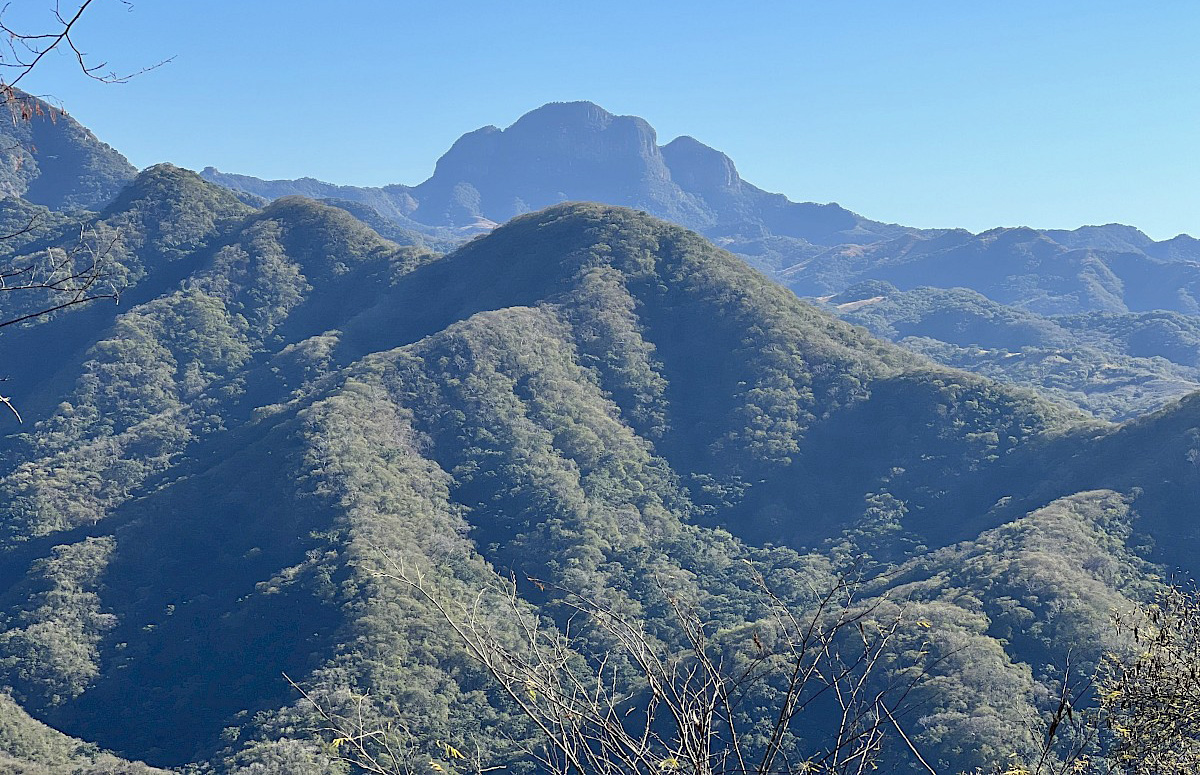The Gold Report: Rod, you were named president and CEO of Crocodile Gold Corp. (CRK:TSX; CROCF:OTCQX) in July after previously serving as the group general manager of exploration and mining development at Nyrstar NV in Canada and before that as general manager of Nyrstar in Peru. How has running Crocodile been different than working at Nyrstar?
Rodney Lamond: The main differences obviously are the size of the companies and the cash reserves. Crocodile Gold is a relatively small company while Nyrstar is significantly larger and has stronger cash reserves, which allow it to ride out any bumps along the way. The other difference is that Crocodile is focused on gold while Nyrstar was focused on zinc. What is similar is the approach to the actual mining activities. We're primarily focused on value as opposed to just the ounces themselves. We're looking at the mineral resources and geological modeling in such a way that we get a better understanding of the metal distribution within the mine. It helps us build confidence in our mine plans so that they can be adjusted in line with the changing metals prices that influence our profitability.
TGR: Tell us about Crocodile Gold's Northern Territory operations general manager, Jason Morin. Jason was previously general manager of Nyrstar's Langlois mine—what does he bring to the table and how closely did you work with him when you were at Nyrstar?
RL: I worked very closely with Jason at Nyrstar. Jason comes to us with a business administration background and has several years of experience in senior management roles in the metals and mining industry. Jason brings to the table a structured approach to running a business and building teams of people who understand what value is being generated by decisions they make on the property.
This is exactly what our Cosmo mine needs at this point, as it has successfully completed the ramp-up to commercial production. A mine that is coming out of ramp-up tends to be focused on trying to achieve the final outputs and far too often overlooks the integration of the policies, procedures and guidelines necessary to run a sustainable operation. Jason provides the leadership and a commitment to the integration of the procedures that need to be followed.
TGR: Please tell us about the production and recovery rates Crocodile Gold Corp. reported in the third quarter for your Cosmo mine.
RL: At Cosmo mine, we mined a total of 201,897 tonnes at an average grade of 3.71 grams per ton (3.71 g/t) gold for the third quarter. That was the highest quarterly total for underground ore mined. This production level contributed to a 20% increase in production over the second quarter. Recovery rates from the Union Reefs mill had been an issue in the past, but we now have them stabilized to normal levels.
The mill processed 188,758 tonnes at an average grade of 3.83 g/t gold and a recovery of 91.8%, which resulted in gold production of 22,316 ounces (22,316 oz). Our operational cash costs decreased to just $981/oz and estimated total cash costs also decreased to $1,226/oz, which we can attribute to a reduction in development and capital expenditures while still supporting operational requirements.
Cosmo mine had a great third quarter and we are confident that this trend will continue.
TGR: Tell us about the improvements at the Union Reefs mill that cut treatment times and increased recovery rates to 90–92%.
RL: The critical first step in producing good processing results is to deliver the right combination of tonnes and grade to the processing plant. The management and employees at Union Reef did a great job to achieve these recovery levels. They focused on improving three specific areas: Gravity gold improvements, an optimized and more consistent leach feed size and maximized oxygen dosing. Coarse gold is recovered with the use of a gravity concentrator and improvements in water quality in the process increased the utilization of the circuit whereby increasing gold recovery. The size of the rock particles is extremely important in gold recovery. Controlling the size to within a small range has a positive impact on gold recovery. Finally, during the gold leaching process, oxygen is added (dosing) to the leach tanks. Balancing the increased cost of adding oxygen with the increased gold recovery is an ongoing optimization program.
TGR: What about production at your Fosterville and Stawell projects?
RL: At Fosterville, we mined a total of 210,360 tonnes at an average grade of 4.61 g/t gold for the third quarter. That's the second highest quarterly total for underground ore tons mined in the mine's history and was the result of continued focus on productivity improvements throughout the mining operation.
A few productivity improvements include better equipment utilization and improved production drilling performance. The mill processed 204,231 tonnes at an average grade of 4.44 g/t gold and a recovery of 86.7%, which resulted in gold production of 25,539 oz. This was a record recovery quarter for Fosterville and featured a September that broke our single-month recovery record at 87.3%, all of which was made possible by improved blending practices and optimization of the leaching circuit.
The Stawell gold mine is now focused on mining out the upper level of the mine, trying to further extend the underground mine life. As a result, we've been able to extend the underground mining schedule into 2014. At Stawell, we mined a total of 147,345 tonnes at an average grade of 2.27 g/t gold for the third quarter. That was a 56% increase over the second quarter results; however, the grades were lower. The mill processed 222,322 tonnes at an average grade of 1.62 g/t gold and a recovery of 73.4%, which resulted in gold production of 8,531 oz.
Approximately 50,000 tonnes of low-grade oxide material was added to the underground production to achieve the high processed tonnage. Some of the underground areas being mined presented recovery difficulties in the processing plant and impacted total gold recovery. We have identified these areas and recoveries are now back at normal levels.
TGR: What's the status of the ongoing review of the Stawell mine? How old is the mine and how long do you hope to extend its life?
RL: The mine commenced operations in Victoria, Australia, in 1981, with first gold pours in 1984 and since then, about 2.3 million ounces have been poured. The review is looking at two areas of the mine, the first of which includes the remnant mining areas in the upper levels. Last February, we shut down the lower levels and began pulling out major infrastructure. Our focus now is to review all the upper levels of the mine for mineralized areas that have been overlooked or left behind to preserve infrastructure, such as main ventilation systems and/or maintenance service areas.
The second area of focus is the extension to an area called the Mariner's Lode. We've started a small diamond drill program to explore the extension of known mineralization. This program has built confidence in our understanding of the area and has added a small reserve base that we are building on. While the gold price will ultimately define how long the underground mine will remain open, we're hopeful to extend the mining activities into the second half of 2014.
TGR: What about the Big Hill project? Where is it located and what is the net present value of the mine? What are the capital needs?
RL: The Big Hill project area is located adjacent to the Stawell gold mine's operation in the township of Stawell. The Big Hill Enhanced Development Project is a four to five year project including the rehabilitation program that will create 80 to 100 jobs and produce 2.3 million tonnes of ore. We're progressing with the Big Hill permitting process and are aiming to fund these expenditures from cash flow. We're also responding to all the questions and concerns surrounding the project and have worked closely with the community to provide answers in a timely manner. The project has a net present value of $39 million ($39M) using a $1,400/oz gold price model, with start-up capital expected to be about $15M and total capital of about $22M subject to a full environmental bond commitment.
TGR: Crocodile raised its 2013 production guidance from 170,000–180,000 oz to 200,000–205,000 oz. What made that possible? What guidance have you given for 2014?
RL: The increase in production guidance is a reflection of our confidence in the near-term production levels coming from the Cosmo mine. Additional throughput at the Fosterville mine and the extension of the underground mining at Stawell were the fundamental reasons we are able to increase our full year guidance. We're finalizing our 2014 budgets right now and plan to release our 2014 guidance by mid-January.
TGR: At Stawell, you had 825 days of lost-time injury-free operations—how did you achieve these safety results? How does your safety record compare at Cosmo and Fosterville?
RL: A safety record like Stawell's doesn't happen by chance. Safety performance there has been commendable and reflects the dedication and commitments of our management and employees to live and work in a heightened state of safety awareness. We combine systems-based management with high participation levels throughout the workplace; we have health and safety representatives, steering committees, regular toolbox and department safety forums and consistent participation. Of course, none of this would be possible without an experienced workforce. It's a lot of effort, but it delivers a great result.
Fosterville saw a significant decrease in injury rates in 2013; the lost-time injury frequency rate dropped by 28% over the course of the year until the end of October. Additionally, the total reportable injury frequency rate, which covers lost-time, medically-treated and minor injuries, fell by 53% over the same period. This is the result of our continued focus on systems and behavior-based safety programs and initiatives.
The majority of the underground workforce at Cosmo is made up of private contractors, but we continue to work with them to integrate the proven safety systems we employ at our other two operations. During 2013, the Cosmo mine also significantly improved injury rates by 50%. Despite all this safety success, we're always looking for ways to further improve.
TGR: What about your capital raising needs? As of Sept. 30, you had cash and cash equivalents of $27.9M and working capital of $14M. How long will this money last? Can you fund operations out of cash flow or will you need to raise new money?
RL: Based on our plans for the remainder of the year and our internal preliminary budget for 2014, we have no intention of raising new funds at this time. We're focused on being cash-flow positive at all of our operations after capital, with sufficient positive cash flow to service our remaining credit facility and corporate overhead.
TGR: You've also committed to making the first payment for CA$34.5M in convertible debentures in cash, stating that you wish to avoid diluting shareholders' stock. Will you need to raise money to do that or can you fund debt maturities and operations out of cash flow?
RL: We're watching this very closely as the gold price weakens. We currently have no plans to raise money, but would rather work on reducing site operating costs and adjusting our mine plans to remain cash-flow positive. The results thus far in the fourth quarter support this.
TGR: Crocodile Gold has indicated it is exploring opportunities to divest non-core assets. Please tell us about those assets. How much money do you expect these divestitures to raise?
RL: We are reviewing all non-core assets and prioritizing our list for divestment. These assets tend to be those distal to the operations, base metal in nature and with long development timelines. We are anticipating net proceed of about US$7M from the divestment program in the first half of 2014.
TGR: What are some of the catalysts that drive Crocodile Gold to reach new share price highs?
RL: A lot of support for the stock will be driven by consistently delivering what we say we are going to do (ounces) and what we're projecting as our cash costs profile quarter over quarter. Obviously, we're susceptible to fluctuating gold prices, but we're looking to grow and possibly diversify our business through opportunities in polymetallic mines, as opposed to unimetallic gold mining. This would lessen the exposure and volatility of the gold price.
TGR: Take out your crystal ball and tell us where you see the gold price going over the next 12–18 months.
RL: In the short term, my projection for gold is flat; I see it staying around AU$1,400/oz for 2014. Our three mines operate in Australia, so we have the benefit of a devaluing Australian dollar, which works in our favor as our costs are Australia based and our production is sold in Australia as well. Obviously, the world economies play a huge factor in the gold price. I see prices becoming favorable (increasing) over the longer term beyond 2014.
Another fundamental and important point is that more transparency is needed to convince investors about the true, actual cost to produce an ounce of gold. The all-in-sustaining cash cost to produce an ounce of gold appears to be where the industry is heading; however, there currently is no clear definition of what this measure includes, especially relating to capital development and corporate G&A expenses. Once the industry adopts a clear cost measure, new base costs for gold will be established.
Both of these factors will drive the gold price, but I am not sure what will happen next year. My thinking is that in 2015, we may see a strengthening of the gold price to the levels of $1,500–$1,700/oz.
TGR: Rodney, thank you for speaking with us.
Rodney Lamond was appointed president and chief executive officer of Crocodile Gold in July 2013. Lamond is a professional mining engineer with over 25 years of operational experience in the mining industry. Prior to joining Crocodile Gold, Lamond was the group general manager responsible for the exploration and mine development strategies for the mining division of Nyrstar NV, which included nine mine operations in six different countries in North, Central and South America. Prior to the group general manager role, he held the position of general manager in Peru. Lamond was vice president of operations and general manager of Golden Hawk Resources prior to the acquisition by Nyrstar. He gained substantial operational experience in senior mine management roles for Breakwater Resources at the Nanisivik, El Mochito and Myra Falls mines. Lamond holds a bachelor degree in mining engineering from Laurentian University in Sudbury, Ontario, Canada.
Want to read more Gold Report interviews like this? Sign up for our free e-newsletter, and you'll learn when new articles have been published. To see a list of recent interviews with industry analysts and commentators, visit our Interviews page.
DISCLOSURE:
1) Dan Lonkevich conducted this interview for The Gold Report and provides services to The Gold Report as an independent contractor. He or his family own shares of the following companies mentioned in this interview: None.
2) Crocodile Gold Corp. paid The Gold Report to conduct, produce and distribute the interview.
3) Crocodile Gold Corp. had final approval of the content and is wholly responsible for the validity of the statements. Opinions expressed are the opinions of Crocodile Gold Corp. and not Streetwise Reports or The Gold Report or its officers.
4) The interview does not constitute investment advice. Each reader is encouraged to consult with his or her individual financial professional and any action a reader takes as a result of information presented here is his or her own responsibility. By opening this page, each reader accepts and agrees to Streetwise Reports' terms of use and full legal disclaimer.
5) From time to time, Streetwise Reports LLC and its directors, officers, employees or members of their families, as well as persons interviewed for articles and interviews on the site, may have a long or short position in securities mentioned and may make purchases and/or sales of those securities in the open market or otherwise.



































